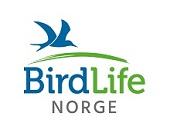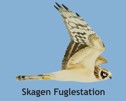
|
|
Rødbrystspurv (Emberiza buchanani) Rødbrystspurv er ny art for Norge og sett på Lista første gang 10. august 2011. Rødbrystspurv på Lista - ny art for Norge
Av M. Wold Geir Birkeland som nettopp har flyttet fra Kristiansand til Lista, oppdaget fuglen på sin aller første tur rundt på området. Den ble først registrert som en hortulan (Emberiza hortulana), en relativt sjelden fugl som vi ser 1-2 ganger per år på fuglestasjonsområdet. Fuglen ble funnet igjen dagen etter av Ole Skimmeland, og utpå ettermiddagen samme dag ble den artsbestemt til en rødbrystspurv (Emberiza buchanani) av Vegard Bunes. Rødbrystspurven ligner en hortulan, men det likevel flere ting som skiller de to artene. Rødfargen på brystet strekker seg lenger oppover hos rødbrystspurven, og den har også et karakteristisk rød-rosa nebb, og en framtredende hvit øyering. Feltornitologene.no har en god beskrivelse på karateristikken. I motsetning til hortulanen er rødbrystspurven lite sky, og fuglen nedpå Gunnarsmyra sitter tillitsfullt på grusveien og hopper etter frø og insekter mens tilreisende står og betrakter den. Rødbrystspurven hekker øst for det Kaspiske hav, helt inn til Sentral-Asia, og overvintrer i India. Den lever stort sett i høyden med karrig vegetasjon og lave busker. Muligens har den blitt ført til Norge på østlige vinder. Fuglen har vært stasjonær i minst et par dager her, og mange har kommet for å se på den. Utover helgen venter vi at det kommer flere tilreisende for å få med seg sensasjonen. | |||||

| Merketall | ||||||||||||
|
| Reportasje fra Lista FS i Aftenposten |

|
| Sesongavvik observasjoner | ||||||||||||||||||||||||||||||
|
|
Følg Følg Lista FS på facebook.com |
| Siste 5 på siden |
|
Ringmerkere til vår- og høstsesongen 2026 søkes Rapport fra våren 2025 Festivalgjester presenterer ny fuglebok Lista Fuglefestival 2025 Rapport fra høsten 2024 |
| Nyheter BirdLife Norge |
|
Tredje runde av Fotonøtta i... Akuttsituasjonen for lomviene... Behov for bedre... Skandinavias første... Legg ned vindkraftverket på... BirdLife Norge: Skuffet over... Arbeiderpartiet sitter med... Lomvisituasjonen: BirdLife OA... |
Lista Fuglestasjon
Fyrveien 6
NO-4563 Borhaug
post@listafuglestasjon.no Tlf: 949 86 793
 |  |


 Bare på norsk
Bare på norsk



